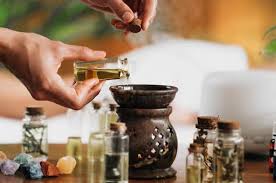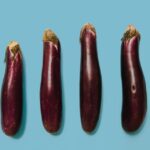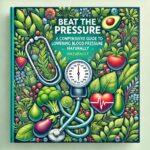Holistic Healing: Integrating Traditional and Modern Medicine

In today’s fast-paced world, health concerns are becoming more complex, and many people are seeking a more comprehensive approach to healing. Holistic healing, which integrates traditional medicine with modern scientific advancements, is gaining popularity as people look for treatments that address not just symptoms but also the root causes of illness.
This article explores the principles of holistic healing, the benefits of integrating traditional and modern medicine, and practical ways to incorporate both approaches into a balanced healthcare regimen.
What is Holistic Healing?
Holistic healing is a healthcare philosophy that treats the body, mind, and spirit as interconnected. Instead of focusing solely on symptoms, holistic approaches aim to restore balance and promote overall well-being. It incorporates a variety of treatment modalities, including:
- Traditional medicine (e.g., herbal remedies, acupuncture, Ayurveda)
- Modern medicine (e.g., pharmaceuticals, surgery, medical technology)
- Lifestyle adjustments (e.g., diet, exercise, stress management)
- Mind-body practices (e.g., meditation, yoga, energy healing)
By combining these methods, holistic healing provides a more personalized and comprehensive approach to health.
The Strengths of Traditional Medicine
Traditional medicine has been practiced for thousands of years and is rooted in cultural knowledge, observation, and experience. Some key forms of traditional medicine include:
1. Herbal Medicine
Herbs have been used for centuries to treat various ailments. Some examples include:
- Aloe vera (for wound healing and digestive issues)
- Turmeric (anti-inflammatory and antioxidant properties)
- Ginseng (boosts energy and supports immune function)
- Ginger (aids digestion and reduces nausea)
2. Traditional Chinese Medicine (TCM)
TCM includes practices like acupuncture, herbal therapy, and qi gong. It is based on balancing the body’s energy (Qi) and addressing imbalances that lead to illness.
3. Ayurveda
Originating from India, Ayurveda focuses on the three doshas (Vata, Pitta, and Kapha) and emphasizes diet, herbal remedies, and yoga for maintaining balance.
4. Indigenous and Folk Medicine
Many cultures have developed their own healing traditions using local plants, spiritual rituals, and natural remedies to treat illnesses.
Traditional medicine is valuable because it often uses natural, plant-based remedies and considers the body’s self-healing ability. However, it can lack scientific validation and may require more rigorous research.
The Strengths of Modern Medicine
Modern medicine, also known as Western or conventional medicine, is based on scientific research, clinical trials, and technological advancements. It has significantly improved human life expectancy and the ability to treat serious illnesses. Some key strengths include:
1. Advanced Diagnostics and Treatment
Medical imaging (MRI, CT scans), blood tests, and genetic testing allow for precise diagnoses and early detection of diseases.
2. Pharmaceuticals
Prescription medications can effectively treat infections, chronic illnesses, and mental health conditions.
3. Surgical and Life-Saving Procedures
Surgeries, organ transplants, and emergency medical interventions save lives and enhance the quality of life for millions.
4. Evidence-Based Approach
Modern medicine relies on controlled studies, peer-reviewed research, and FDA-approved treatments, ensuring safety and efficacy.
Despite these strengths, modern medicine can sometimes focus too much on treating symptoms rather than addressing underlying causes. It can also be expensive and may involve side effects from medications.
Integrating Traditional and Modern Medicine
Rather than choosing one approach over the other, integrating traditional and modern medicine allows for a more well-rounded and effective healthcare strategy. Here’s how these two approaches can complement each other:
1. Using Herbal Medicine Alongside Conventional Treatments
Many herbs and natural remedies can enhance modern treatments. For example:
- Ginger or peppermint can be used alongside chemotherapy to reduce nausea.
- Turmeric can complement anti-inflammatory medications for arthritis.
- Aloe vera can soothe skin burns from radiation therapy.
However, it’s essential to consult a healthcare provider to ensure no interactions occur between herbs and prescription medications.
2. Acupuncture and Pain Management
Studies show that acupuncture, a key part of Traditional Chinese Medicine, can help with pain relief, reducing the need for opioids or anti-inflammatory drugs. It is often used for conditions like:
- Chronic back pain
- Migraines
- Arthritis
- Post-surgical recovery
3. Mind-Body Medicine for Stress and Mental Health
Stress is a significant contributor to illness. Practices like yoga, meditation, and breathing exercises can reduce stress and improve mental health. These techniques can be used alongside conventional treatments for conditions such as:
- Anxiety and depression
- High blood pressure
- Insomnia
4. Functional and Integrative Medicine
Functional medicine doctors analyze a person’s genetics, lifestyle, and environment to tailor treatments that include both modern and traditional approaches. Examples include:
- Combining probiotics with antibiotics to protect gut health
- Recommending dietary changes to support chronic disease management
- Using vitamin supplements alongside conventional therapies for immune support
5. Preventive Care and Holistic Lifestyle Changes
Traditional medicine emphasizes prevention through diet, exercise, and natural remedies. When combined with modern screenings and medical checkups, preventive care becomes even more effective.
For example:
- Traditional Ayurveda diets emphasize anti-inflammatory foods, which can help prevent chronic diseases.
- Regular medical checkups can detect issues early and allow for timely intervention.
Challenges in Integrating Traditional and Modern Medicine
While integration offers many benefits, there are challenges:
- Scientific Validation: Many traditional remedies lack large-scale clinical trials to prove their effectiveness. More research is needed to bridge this gap.
- Regulation and Safety: Herbal supplements are not always regulated, leading to variations in quality and effectiveness.
- Medical Skepticism: Some doctors are hesitant to embrace traditional medicine due to a lack of standardization and scientific backing.
- Patient Awareness: Many people are unaware of how to safely combine traditional and modern treatments. Consulting healthcare professionals is essential.
How to Safely Integrate Both Approaches
If you want to incorporate both traditional and modern medicine into your healthcare plan, consider these steps:
- Consult a Knowledgeable Healthcare Provider – Work with doctors, herbalists, or integrative medicine practitioners who understand both approaches.
- Research and Verify Treatments – Ensure that traditional remedies you use have scientific backing and are sourced from reputable suppliers.
- Monitor Interactions – Be mindful of how herbal supplements interact with prescription medications.
- Balance Lifestyle Choices – Use diet, exercise, and stress management as part of your holistic health plan.
- Listen to Your Body – Pay attention to how your body responds to treatments and make adjustments as needed.
Final Thoughts
Holistic healing is about finding balance between traditional wisdom and modern science. By integrating the best of both worlds, individuals can benefit from a comprehensive approach to health that treats the whole person—mind, body, and spirit.
Rather than seeing traditional and modern medicine as competing forces, it’s time to view them as partners in achieving optimal well-being. By being informed, open-minded, and proactive in our healthcare choices, we can harness the power of both ancient healing traditions and modern medical advancements for a healthier future.



